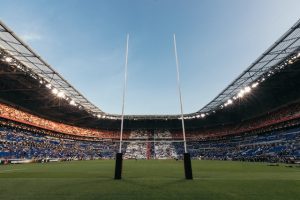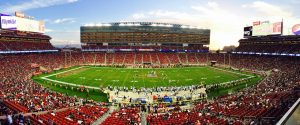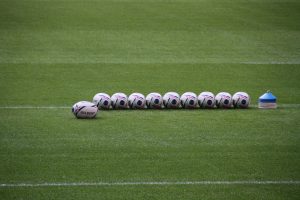
Hello and welcome, dear readers. We are pleased to present you with this site dedicated to the fascinating history of the Heineken Champions Cup or the former European Rugby Cup tournament.
We will tell you the story of how the Dutch beer company came to sponsor the biggest rugby tournament in Europe. We will also discuss notable games and players who made their mark at this tournament. Lastly, we will recount the story of why the championship is no longer called that way and what are Heineken’s plans for the future.
European Rugby Cup pre-Heineken
This is going to be quite a short section as there was no European Rugby Cup competition prior to Heineken’s involvement in the tournament. Yes, this might seem very odd as most sports competitions that carry the name of their sponsors existed before they were picked up by the sponsor, but that’s not the case with the European Rugby Cup.
Heineken Champions Cup: Founding

The history of this now iconic and prestigious rugby tournament is nothing short of interesting. At the beginning of the 1990’s, a few countries in Europe thought that the continent deserved a proper rugby competition between the best teams from each country.
An unlikely committee emerged comprising of five countries, namely France, Italy, Romania, Ireland and Wales to form the then Five Nations Committee.
You probably already notice something interesting here; where are England and Scotland? The two countries are inarguably the biggest centres of rugby in Europe and the world, yet they didn’t take part in the first tournament and they were not part of the committee.
This lack was noticeable, and perhaps fans and professionals alike were a bit suspicious of this new tournament but Heineken noticed the potential and joined this new sports feat.
First Heineken Champions Cup
The Five Nations Committee along with Heineken were ready to prove what they are capable of, and they started preparing for the first ever Heineken Champions Cup. Romania was chosen to host the first game, while France, Italy, Ireland, and Wales hosted the other games.
Twelve teams from the aforementioned five nations would face each other in this exciting tournament, namely:
- Farul Constanţa (Romania)
- Castres (France)
- Toulouse (France)
- Bordeaux (France)
- Cardiff (Wales)
- Pontypridd (Wales)
- Swansea (Wales)
- Leinster (Ireland)
- Munster (Ireland)
- Ulster (Ireland)
- Benetton Treviso (Italy)
- Rugby Milano (Italy)
The twelve teams were divided into four pools of three whereas every team would face each team in the pool once. A win results in 2 points, while a draw – 1. The team with most points in each pool would then proceed to the knockout stage to play against the other three leading teams.
The first ever game was between Farul Constanţa and Toulouse in front of a small audience of 3,000 in Constanta, Romania on 31 October 1995. The away team, Toulouse, ended up winning 54-10.
Toulouse dominated its pool and faced the other pool leaders, Cardiff, Leinster, and Swansea, in the knockout phase. More and more people learnt of that new Heineken Champions Cup and the games drew bigger audiences with time.
Toulouse won its game against Swansea 30-3 in the semi-finals, while Leinster won against Cardiff 23-14. The French and the Welsh teams faced each other in the final which was nothing short of a spectacle. The game took place on 6 January, 1996 in Cardiff with over 21,000 fans in attendance.
The game was heated and both teams gave the performance of a lifetime. Toulouse ended up winning 21-18, thus becoming the first to lift the Heineken Champions Cup.
Popularity Rises

The first rendition of the rugby tournament proved to be successful and it apparently made England and Scotland reconsider their initial rejection of it.
The two countries and their legendary teams joined the Heineken Champions Cup in 1996 in anticipation for its second run. The competition now featured 20 teams divided into four pools of five, meaning that rugby fans could then enjoy 47 matches rather than the inaugural 15.
Bath (EN), Edinburgh (SCT), Leicester (EN), Scottish Borders (SCT), Harlequins (EN), Caledonia (SCT) and London Wasps (EN) joined in, while the sole Romanian team, Farul Constanţa, strangely left.
The introduction of these world-famous teams brought more legitimacy to the competition, as well as more lucrative sponsor and broadcast deals. The final between Leicester and Brive, played on 25 January 1997, was reportedly watched on television by 35 million people worldwide, and had live audience of 41,664 at Cardiff Arms Park.
Brive easily won the game (28-9), making it the second French team to win the Heineken Champions Cup. Brive ended up qualifying for the final of the 1997-1998 Heineken Champions Cup but they lost it to the English team Bath after a penalty kick.
Although the English won their first trophy in the tournament, they ultimately decided to leave it due to the way it was organised and administered (Rees, 2006). The next year’s tournament, 1998-1999, thus featured 16 teams from France, Ireland, Italy, Scotland, and Wales.
Despite England’s exit, the competition still drew a lot of attention. There were 55 games in total and the final between Ulster and Colomiers had live audience of 49,000 at Lansdowne Road Stadium in Dublin to mark the impressive Ulster win of 21 to 6.
The New Millennium
It seemed like England reconsidered yet again as the country and its talented teams returned for the 1999-2000 season. That Heineken Champions Cup was planned differently so as to develop along with the domestic rugby tournaments.
The group stage was thus played over three months and the final was planned for the spring. The rugby competition started on 19 November 1999 and ended on 27 May 2000, not unlike its football counterpart the Champions League.
After 78 exciting games, Northampton Saints and Munster faced each other at the final played at Twickenham Stadium, London which was attended by 68,441. The game was really close the whole time, but the English team eventually won with 9-8, making Northampton Saints the first winners for the new millennium.
Another English bagged the trophy the following 2000-2001 season – Leicester – after they won 34-30 against Stade Français on 19 May 2001 with live audience of 44,000 at Parc des Princes in Paris.
The next year final drew the biggest numbers yet for the tournament with over 74,600 people watching the Leicester-Munster game at the Millennium Stadium in Cardiff on 25 May 2002.
The Leicester Tigers dominated the game and won the trophy again in 2003, making history as the first team to win it twice and to also win it in two consecutive years, thereby successfully defending their title.
The Heineken Champions Cup inspired another rugby competition, namely the European Challenge Cup which was founded only a year after the former in 1996. The European Challenge Cup is a second-tier competition for the teams that couldn’t qualify for the Heineken Champions Cup.
Starting in 2002, however, the winner of the European Challenge Cup automatically qualified for the Heineken Champions Cup. The first team which qualified under the new rules were the English Sale Sharks which took part in the 2002-2003 championship.
The final of that tournament saw for the first time two French teams, Toulouse and Perpignan, face each other at Lansdowne Road Stadium, Dublin on 24 May 2003. The game was nothing short of exciting and it brought a second champion title to Toulouse.
For the 2003-2004 rugby season, Wales decided to shake things up. They created regional teams which would compete in European tournaments, rather than the top clubs which have so far represented them. The Welsh teams which entered the 2003-2004 Heineken Champions Cup were thus Newport Gwent Dragons, Neath-Swansea Ospreys, Cardiff Blues, Llanelli Scarlets, and Celtic Warriors.
The season ended with one of the most interesting finals to date. The London Wasps played against the reigning champion Toulouse at Twickenham Stadium, London with over 73,000 fans watching the final live. The game was about to enter extra time with the result of 20-20 but the Wasps managed to score and take it to 27-20, thereby winning their first trophy.
Later Years

Toulouse apparently didn’t take the loss well, so they fought hard in the 2004-2005 to remedy themselves. They ended up winning the final against Stade Français in Edinburgh, winning their third title.
Another team, Munster, also had the opportunity to clear their name in the 2005-2006 season. The team had previously lost two finals, but they managed to win their first title when they played against Biarritz, winning 23-19.
The next season proved to be even more exciting with two teams, Llanelli Scarlets and Biarritz winning every game in their respective pools. However, surprisingly, neither team reached the final. The final was all English with the Wasps facing Leicester with record audience of 81,076 at Twickenham.
Leicester was the favourite, having won the Anglo-Welsh Cup and the English Premiership but the underdog ended up winning with an impressive score of 25-9.
The organisers of the competition had managed to secure broadcasting to 100 countries, further increasing the exposure of the tournament. However, trouble was brewing.
The French teams threatened to leave the competition over schedule issues and the English disputes with the RFU (Rees, 2007). Still, the situation was eventually resolved and both English and French teams competed.
Munster ended up bagging the title in 2008 against Toulouse, while Leinster won their first title at their first final in 2009 against the reigning champion Munster. The next year, Toulouse made history by winning their fourth title in the tournament in a game against Biarritz.
Leinster won again in 2011 when they played against Northampton Saints. The Irish team impressed everyone when they successfully defended their title in 2012, having won 42-14 against Ulster, representing the highest winning margin.
The next two seasons were dominated by the newcomer Toulon which impressively won both titles.
The End of the Heineken Era
The Heineken Champions Cup has had many organisational disputes over the years which ultimately led to its demise. Some issues concerned scheduling conflicts, especially around the time for the World Rugby Cup. Other issues involved the redistribution of funds, the qualification process, and the broadcasting rights.
French and English teams were especially concerned with the qualification process and they proposed for the best teams in the league, regardless of their nationality, to only be allowed to enter the Heineken Champions Cup. This proposal was not met with agreement by the European Rugby Cup (the organiser of the competition).
Following all these aforementioned issues, English and French club threatened to leave the tournament many times (with England already having left once), but their threat in 2012 was taken more seriously (Thomas, 2012) as they announced plans to organise their own event after withdrawing.
As a result, there were changes made into the European Rugby Cup was replaced as governing body in 2014 by the European Professional Club Rugby.
The new governing body announced a new competition to replace the Heineken Champions Cup called the European Rugby Champions Cup, a reformed second-tier tournament called the European Challenge Cup, and a wholly new third-tier tournament known as the European Rugby Continental Shield (The Rugby Paper, 2014).
In addition, the broadcasting disputes were also settled with BT and Sky both receiving the rights to televise the new European competitions, dividing the games between each other (pool matches, quarter-finals, and semi-finals), with both being allowed to screen the big finals of the aforementioned competitions.
Surprising Return
After four years, in 2018, the European Rugby Champions Cup was yet again renamed to Heineken Champions Cup. The tournament, however, was different than the original Heineken Champions Cup, abiding to the new rules set in 2014.
Heineken remained a main sponsor until 2023 when Investec, a bank and wealth management company, took over and became the namesake of the new tournament, now called the Investec Champions Cup.
